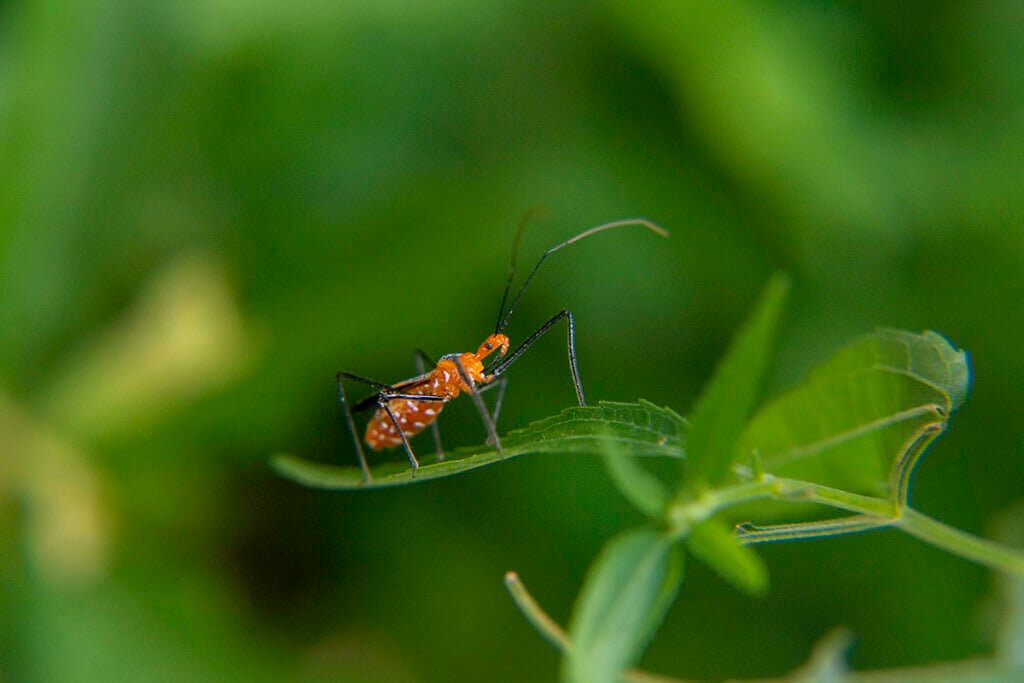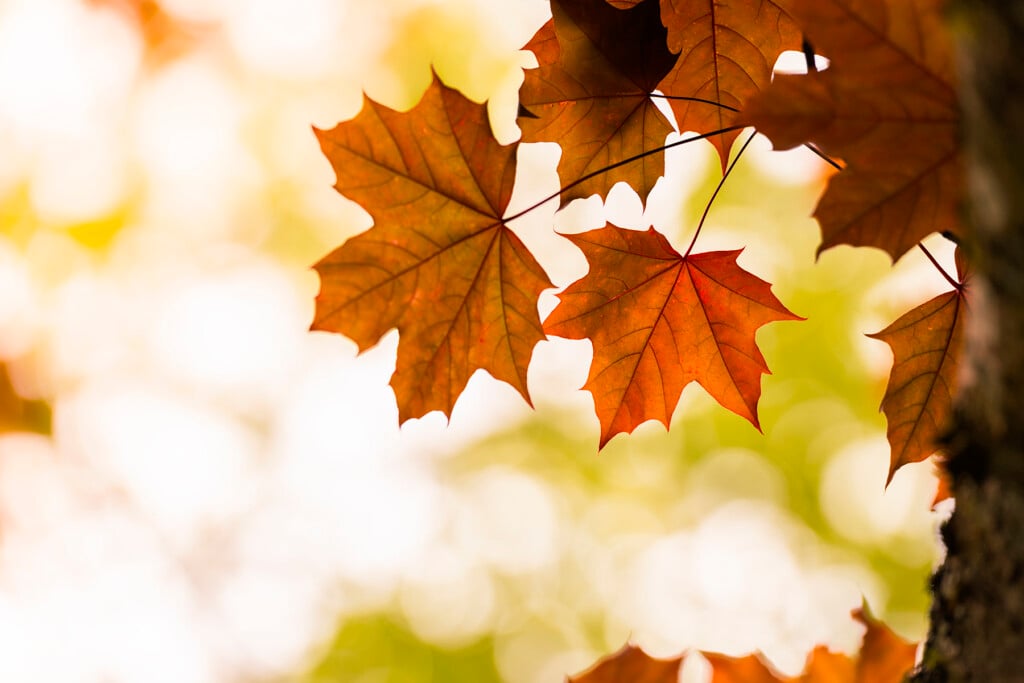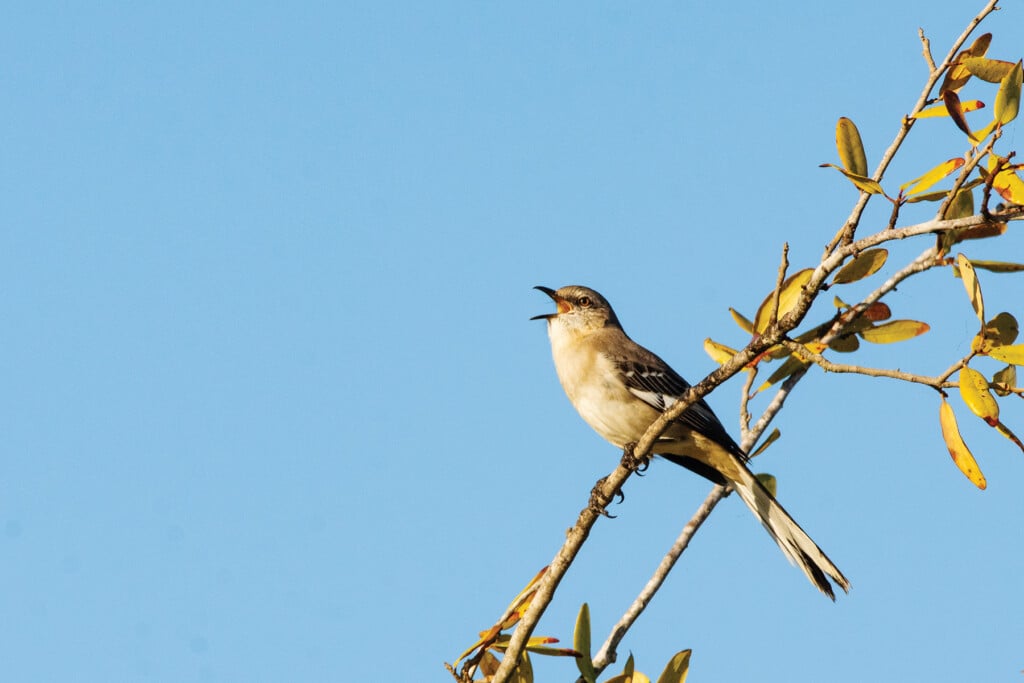Summer Gardening Tips
Milkweed assassin bugs, chickadees and blooming shrubs

Look But Don’t Touch
A pain for its prey, milkweed assassin bugs prove productive for gardeners who avoid their sting
During summer some insects view each foliage location as an open smorgasbord ready for their visit. Luckily, there are bugs that stand guard and prevent the total pillaging.
Among the many native hunter insects is the milkweed assassin bug, Zelus longipes. Sometimes known as the long-legged assassin bug, it displays bright coloration especially when in the juvenile stages of development.
This species is common in southern North America, especially in the Gulf Coast region.
This winged bug is slightly less than ¾ inch long and has a slender, straight beak with piercing, sucking mouthparts.
When their beak is not in use, it is bent back and held under the thorax in a groove. It is carried much like a folding pocket knife, only to be extended when needed.
Adults and nymphs have a pear-shaped head, constricted neck and long, hairy legs, giving this insect an awkward, lanky appearance. The shape and appearance is generally the same throughout its life.
The milkweed assassin bug is active during the day. With a bright orange coloration, its presence is easily observed when contrasted with green leaves.
The strategy used to catch its prey is known as the “sticky trap strategy.” Like many bugs that employ ambush tactics, the milkweed assassin bug attacks prey after hiding in foliage.
The exposed forelegs are covered with a viscous material which acts as a glue and results in the prey’s entanglement. The target insect is rapidly paralyzed when the milkweed assassin bug inserts its beak into the host body.
This tiny predator can feed on prey that may be up to six times their own size.
Problems can arise when these insects encounter humans. It is capable of delivering a nasty surprise to the unsuspecting gardener. While not life-threatening, the bite can cause a burning sensation and swelling lasting several days.
Gardener’s Feathered Friend
The black-capped chickadee, Poecile atricapillus, is the nonmigratory songbird species that calls this area home.
Insects are a primary dietary staple during the summer. Caterpillars are a particular seasonal favorite and form a large part of this songbird’s summertime diet.

Chickadee. Photo by istock / getty images: chas53
An agile flyer, this bird will sometimes pursue flying insects. Chickadees have been observed patiently hovering while stalking insects that dart for easy cover in dense foliage.
During late autumn and winter, seeds and dried berries fill in for the absent insects. Beautyberry, dogwoods, sparkleberry and others sustain this bird through the lean, cold months. Even in winter, they seek out larvae and insect eggs hidden under bark and leaf litter.
Chickadees are frequent visitors to homes with bird feeders. Black oil sunflower seed is popular with this species which will take the seed to a nearby branch to crack and eat. The regular visits to the bird feeder may attract the attention of a native predator, the rat snake. An excellent climber, this reptile will wait with absolute stillness for an unsuspecting chickadee to come within striking range.
The song of the black-capped chickadee contains only two notes but many patterns for projecting these tones. Other chickadee species have additional notes and different songs.
It has been speculated the songs or calls are a form of interspecies communication between these birds. Even though physically close, living in dense foliage the birds are frequently out of each other’s sight.
With its many positive attributes, this tiny songbird is a welcome garden visitor.
Early Summer Gardening Tips

Azaleas. Photo by istock / getty images: krblokhin (Azaleas)
June and early July is the pruning period for those early blooming shrubs common to the area’s landscapes. Azaleas, spiraea and gardenias should be pruned and shaped during these weeks. Next year’s buds start developing by mid-July, so complete this task to avoid reducing next year’s bloom. Independence Day is the commonly set date to stop clipping. Monitor for nutrient deficiencies or environmental problems with palms and cycads. Identify the condition and correct issues using an appropriate treatment. Magnesium deficiency can happen in both palms and cycads. The remedy for this situation is easy to locate, inexpensive and simple to apply — a true rarity among plant deficiencies. Epsom salt, a staple in drug stores and pharmacies for footbaths, is chemically known as magnesium sulfate. A sprinkling of Epsom salt in the root zone of palms and cycads can act as a supplement for this micronutrient which is limited or absent in local soils.


